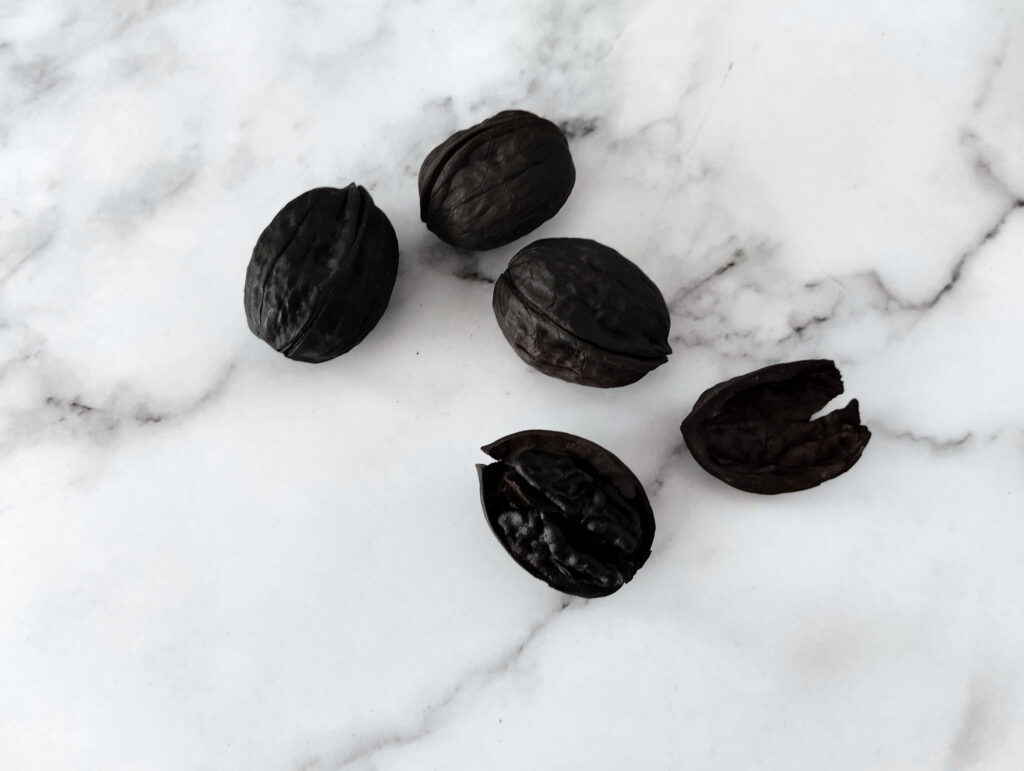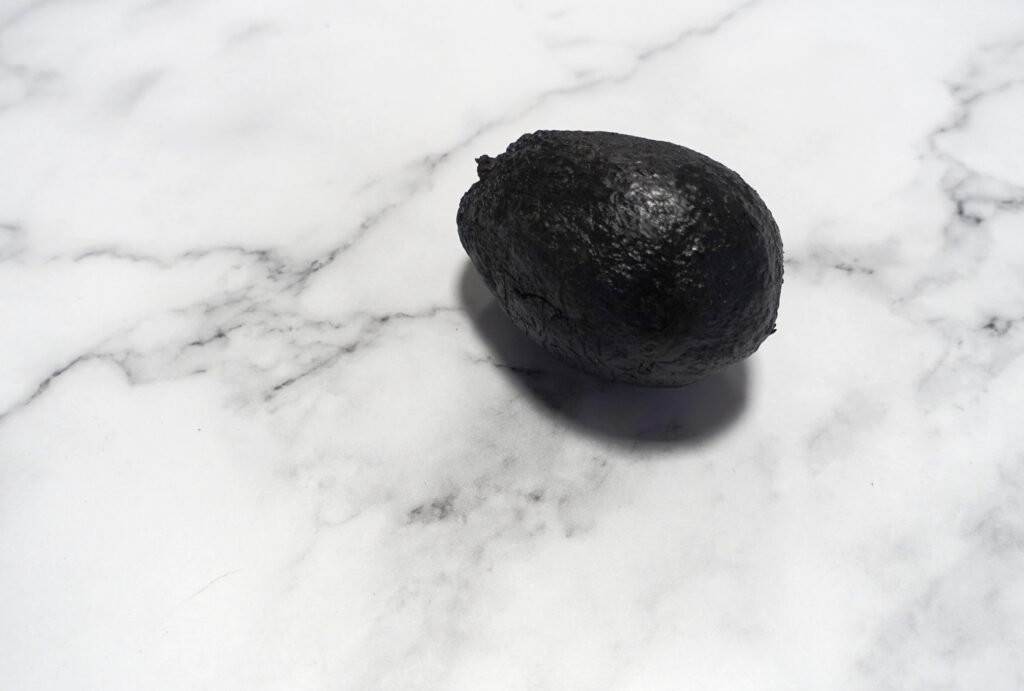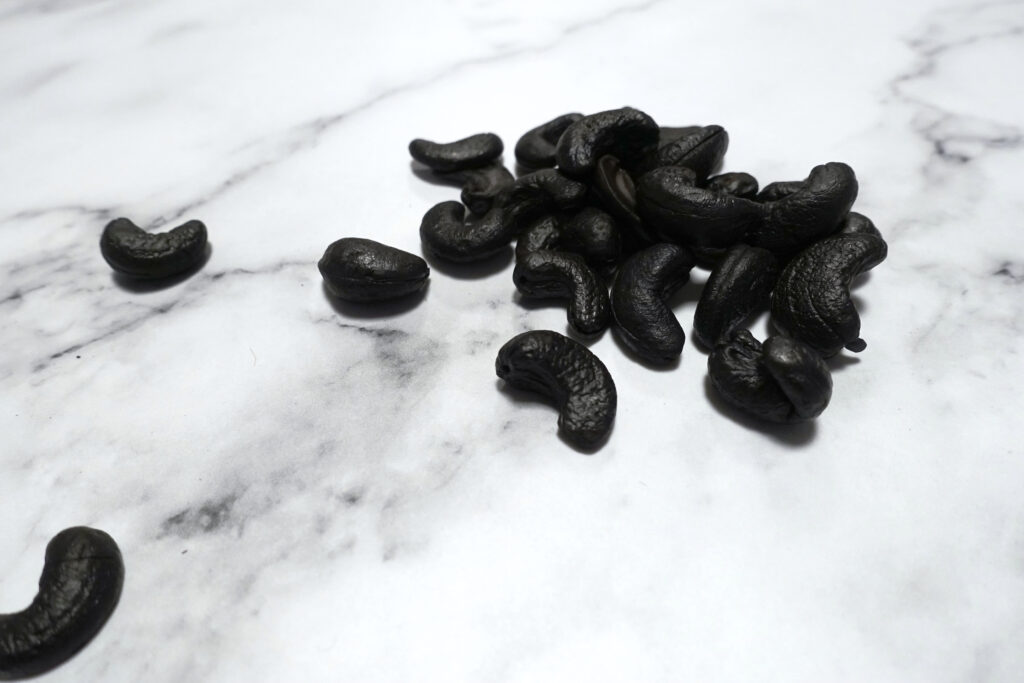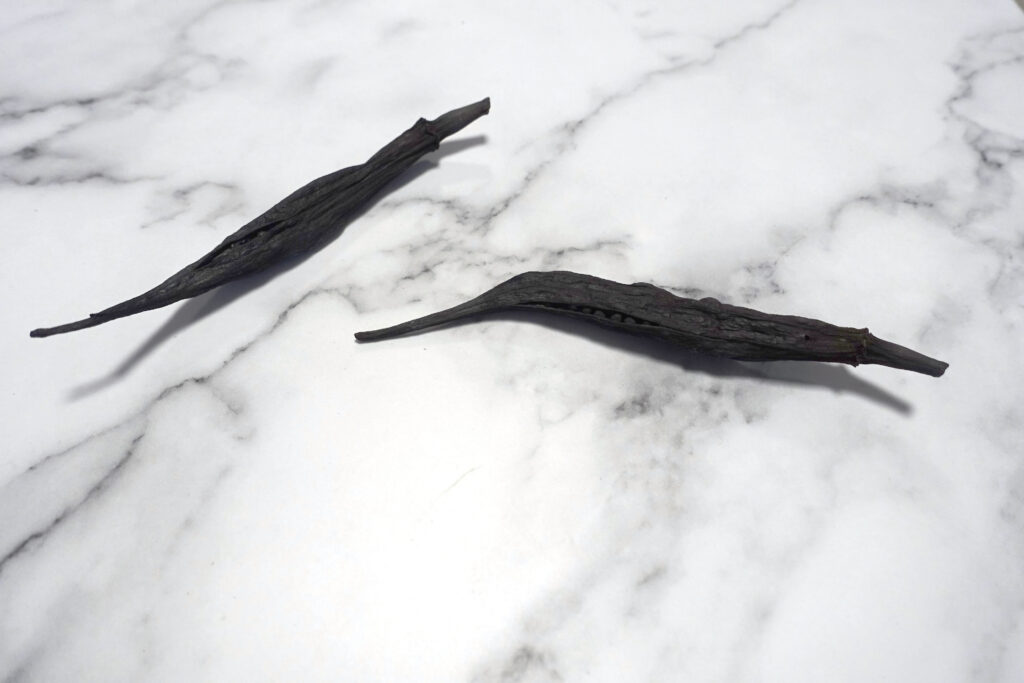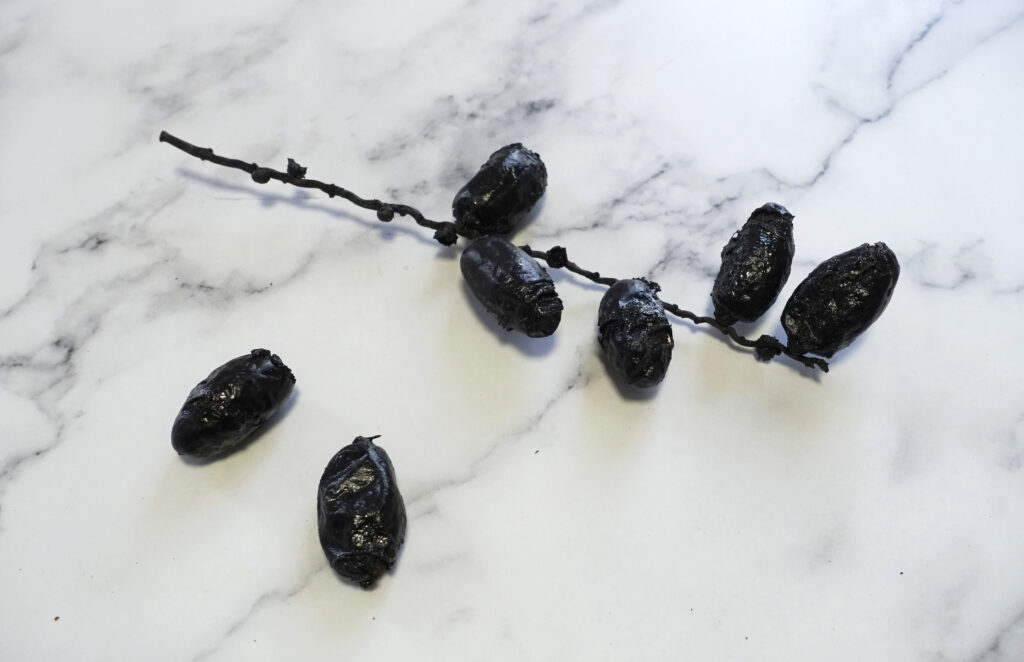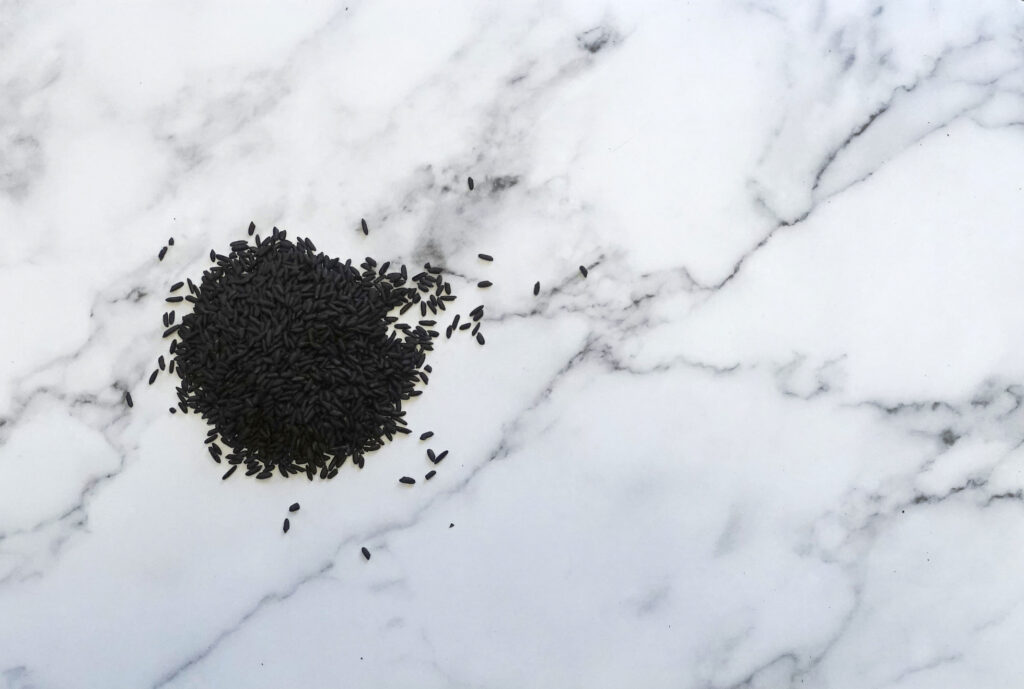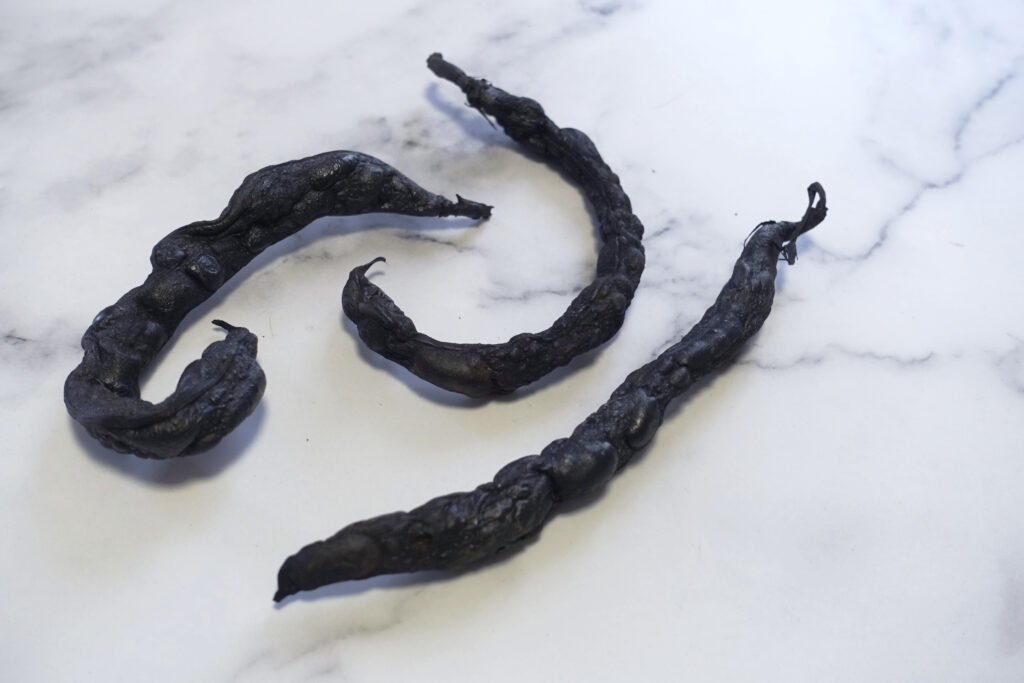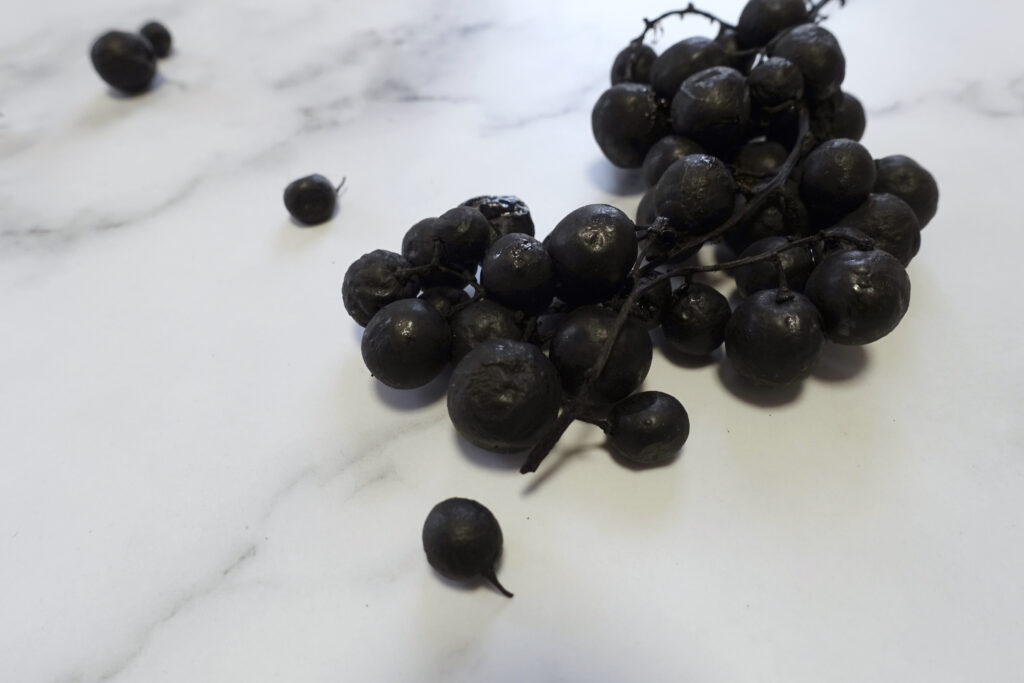Still Life : Carbon on Carbon
2022
Carbonized food and plastic ready-made in marble trompe-l’oeil
Variable dimension
The inspiration for this series came from a visit to the Museum of Egyptian Antiquities in Turin (Italy), where the artist saw a reconstruction of antiquity daily life with some carbonized foods in ancient pottery tablewares. Carbonization is a process that occurs naturally underground, taking up to thousands of years. Once carbonized, food will no longer decompose. Their structure is very well preserved, which allows archaeologists to study the varieties and evolution of ancient plants as well as the diet of our ancestors.
In the Anthropocene and especially since the Capitalocene, human beings’ way of life has changed a lot. The industrialization of agriculture and genetic engineering make that we do not eat the same products as humans before. The invention of plastic and urbanization also changed the varieties of residuals left behind us. All this means that future humans could probably not learn about us they way we learn about our ancestors. What traces do we leave for the next generation? What are they going to find?
The artist therefore decided to reproduce the process of carbonization, to “conserve” today’s food and then present them on a piece of plastic, the symbolic material of our time. In theory, these carbonized fruits and vegetables decompose less fast than the plastic they sit on. This composition of “carbon on carbon” evokes discussions on consumption, sustainability, as well as the perception of time and history.
